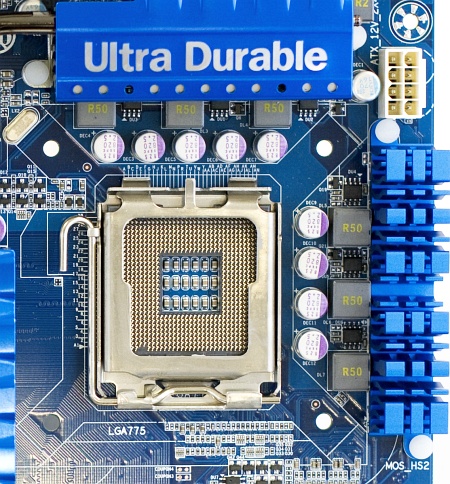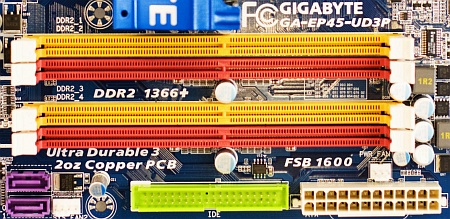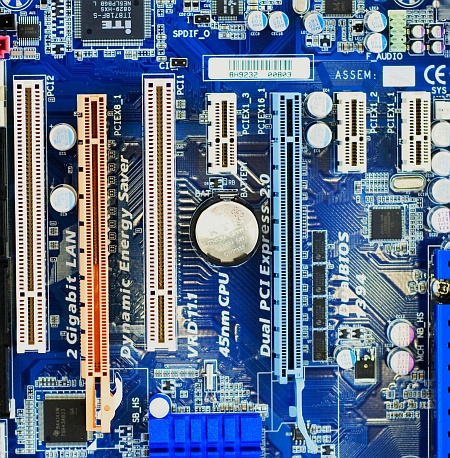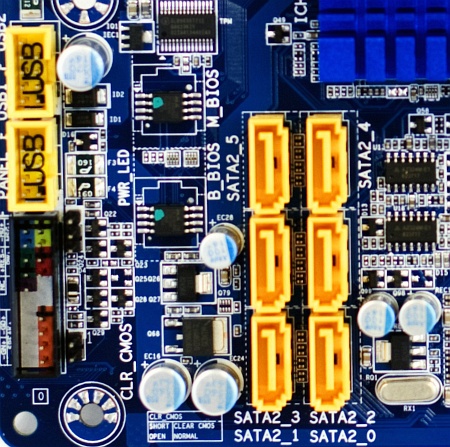Index
Layout:
The first surprise are the blue heatsinks, which are new in the market. While we have seen tons of boards with copper colored heatsinks, even when they are all made of aluminium, with some exceptions by Gigabyte, this board does not appear to show off. It still looks stylish and it appeals to our eyes.

The VRM is an analog 6-phase design driven by an ISL6336. This is the same controller family that powers MSI's DRMOS, but the implementation is just not that good as MSI has done - except MSI does turn off this feature by default.

The memory slots are well placed. They are far away from the PCIe x16 slot, so you can change the memory with the graphics cards installed. The power and IDE connectors are placed beneath. The floppy-connector has been moved to the outer left of the board, because Gigabyte was one of the first vendors to allow flashing from an USB flash drive, so we will not miss the floppy-connector at all.

The slots are configured well. If you like to use a CrossFire setup on most boards you lose all additional slots. Not on this board. Even with two dual-slot cards installed, you still have two PCIe x1 and one PCI, that is clever.
For some reason all vendors go for the cheapest PCIe Gb LAN solution on the market, which is the Realtek RTL8111C. It is not known for very good performance, especially the I/O load is quite weak. A Marvell, Broadcom or Intel chip would have been a better choice, but of course opting for a better chip would also have increased costs. Audio is also provided by a Realtek chip: the ALC889A. We are not able to determine the difference between ALC888 and ALC889A, because the Realtek Webpage doesn't say anything about it. It seems it's just a custom design for Gigabyte with no real difference. The ITE chip is a super I/O controller, for all legacy devices, such as floppy, LPT and COM ports. The so called "Gigabyte SATA2" chip is a JMicro JMB363. We would have liked if Gigabyte had used them for two eSATA ports on the back-panel, but the package includes a SATA to eSATA bracket which will do fine, too.

The SATA connectors are not on the edge of the board. Instead, the SATA connectors are placed behind the second PCIe x16 slot. We do not like that much. In case you buy a three-slot graphics-cards such as the new Gainward Rampage you will run into trouble, because the card will block three of the six connectors. So, next time we hope Gigabyte is using angled SATA connectors which do not interfere with any cards.
